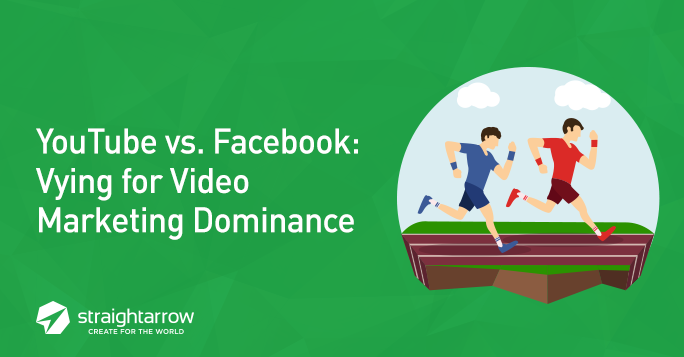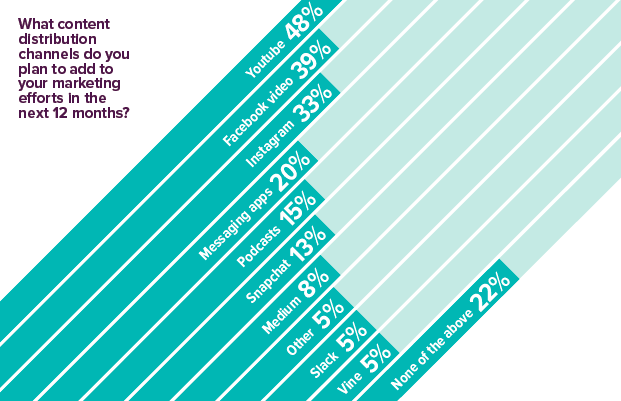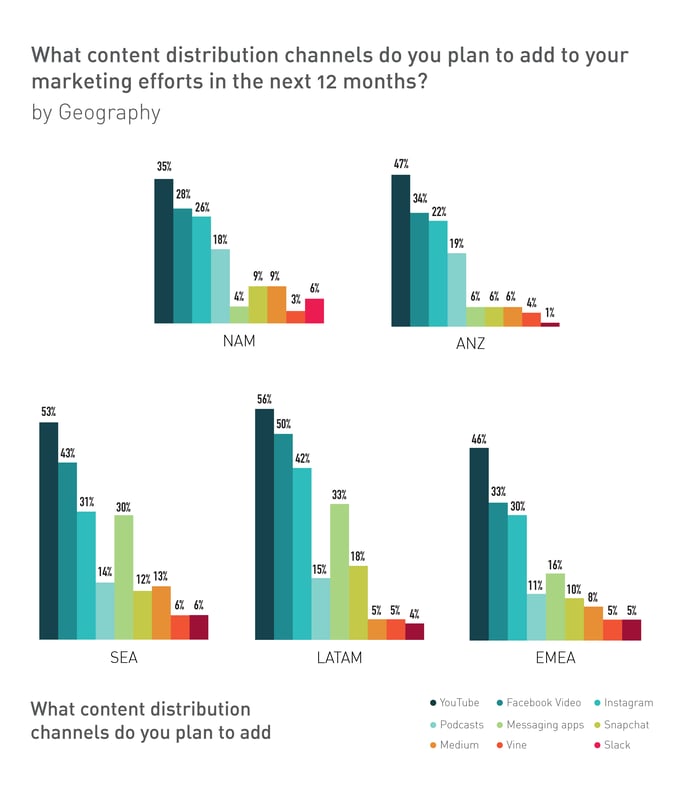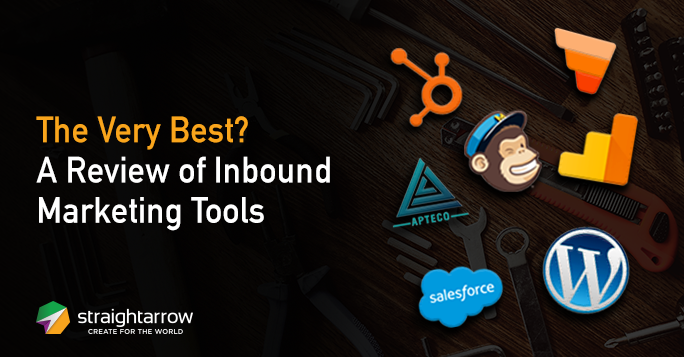
The lines separating Youtube and Facebook are slowly becoming blurred. The former is a video-sharing platform, while the latter is a social network, but recently each one has been dipping its toes in the other’s waters. And as consumers’ interest in social media and video overlap, marketers are turning to video to draw their leads closer. And so, the battle for the best social video platform has begun.

By now, you’ve probably heard of this not-so-little video site called “YouTube” and have used it to search for funny cat videos (don’t worry, we won’t judge). And you’re probably on this social networking site called “Facebook” and also shared a couple of videos about something hilarious or maybe about food. These two platforms are marketers’ top choices for publishing and promoting video content. In this year’s State of Inbound, 48% of respondents indicated plans to tap YouTube as a distribution channel for their marketing efforts in the next 12 months, while 39% said the same thing about Facebook Video.

Source: State of Inbound 2016
When it came to distribution channels that companies planned to add to their marketing efforts within 12 months, YouTube and Facebook video were in the lead. YouTube had a nine percentage point lead over Facebook Video, which was six percentage points away from the third in preference, Instagram. The same result in data was showed when companies were sorted by geography, and when respondents were segregated by seniority in the company.

Source: State of Inbound 2016
This shows that among all the social media platforms that companies can choose from to add to their distribution channels, YouTube and Facebook Video are the top picks.
So it all boils down to one simple question: YouTube or Facebook Video? These are the two most prominent video channels, where people can search, watch, and share videos about practically anything.
Back in the days, whenever you wanted to upload a video, YouTube would be your go-to website. It would also the website you’d turn to whenever you wanted to spend hours aimlessly watching videos about anything and everything under the Sun. YouTube videos, in comparison to Facebook videos, tend to be the choice for people who want longer and more specific material about something they’re interested in. Facebook videos tend to be shorter.
But now, the race takes a sudden turn. YouTube is finding itself running with Facebook video breathing down its neck. To keep its lead, YouTube is launching a social feature called Backstage. It will reportedly allow users to share photos, posts, links, polls, and videos with subscribers, much like Facebook users do on the platform with their friends. This new feature from YouTube will appear as a channel tab, and will also allow subscribers to share content, comment with video, photos, and other kinds of replies.
To secure its position, Facebook added livestreaming to their platform, both on personal timelines and on messenger. The social media giant also included a dedicated video tab exclusively for subscription-based channels.
This put YouTube’s live stream function into perspective. Who was first to go live? Well, technically, YouTube was the pioneer in the live-streaming field. However, it started up as a desktop-only function and was only available to a limited number of creators, such as Red Bull, who featured Felix Baumgartner’s epic leap from the edge of space. Between the two giants, it was Facebook that beat YouTube to the punch. Facebook released its mobile live-streaming feature to celebrities first, then to everybody. A few months after, YouTube released its mobile live-streaming function to creators everywhere.

One big difference between Facebook and YouTube videos is the method of curation. On Facebook, the platform’s algorithm determines, based on your profile and activity, what content is most relevant to you, which is what you see on your feed. This eliminates the problem of looking for content all across your network--which, as it turns out, isn’t an option Facebook supports. YouTube, on the other hand, lets you search for whatever videos you want to view, whenever you want to. The platform’s algorithm then adjusts according to what videos you have previously watched to provide suggestions.
Despite the success that Facebook has had in incorporating videos into its platform features, the fact that YouTube receives the second highest volume of searches--bested only by Google’s search engine--maintains it as the leader in the field. YouTube gets 30 million visitors every day. And while Facebook still has a lot to learn, such as how to generate more views like those garnered by YouTube, the competition stays fierce.

Marketers today still have a hard time choosing which platform would be better for their business. But one thing’s for sure--these two platforms are best when they coexist. Their innovation includes catching what the other one is doing, and finding a better way to do that.
If your goal is to get high view rates and video completion rates with a low cost per view, then YouTube is the way to go. Youtube’s view rates show that 23.6 percent of people who scrolled past the video viewed it versus Facebook's 5.4 percent, while YouTube’s video completion rate is 20.4 percent versus Facebook's 4.5 percent.
If you want high engagements, Facebook’s engagement rate of 0.301% wins over Youtube’s 0.163%.
Keep in mind, though, that Facebook’s interactive elements such as likes and shares are easier to understand than those of YouTube. Facebook also counts a view after just 3 seconds, while YouTube counts a view around 30 seconds; with Facebook’s autoplay feature for videos, its numbers are considerably inflated from what they would be by YouTube’s standards.
It’s up to you to determine which platform would suit your social media campaign better. When choosing, try to determine the end goal of your campaign, whether you want to measure views or engagement, and how each platform counts views, and how their engagements work. Also, try to think like your consumer. Know when they want to view videos, what kind of videos, and where they are likely to watch them.
Want to know more? Link us to your Facebook page and we'll tell you how well optimised it is, and concrete ways you can make it even better.










![So You’ve Decided to Outsource: Now What? [Infographic]](https://www.straightarrow.com.ph/hubfs/2016_Images/September_2016/So_Youve_Decided_to_Outsource.png)



Comments